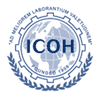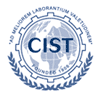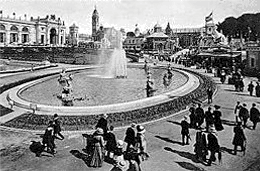

 1910 - Brussels
1910 - Brussels
10-14/09/1910 - 2nd International Congress of the Commission Internationale Permanente pour l'Étude des Maladies Professionnelles
The Second Congress of the “Commission Internationale Permanente pour l'Étude des Maladies Professionnelles” is held in Brussels, September 10-14, 1910, again at the same time as the World Exhibition. The Congress is highlighted in the press and the public opinion. It is granted with the “very high patronage” by the H.M. the King Albert of Belgium and a number of adhesions quite higher than in 1906: participants are 751 and it is definitely an International Congress with 384 Belgians, against 367 foreigners of whom 69 are French and 63 are Italians.
12/09/1910 - 2nd Meeting of the “Commission Internationale Permanente pour l'Étude des Maladies Professionnelles“ and presentation of budget for years 1907-1909
During the Brussels Congress, on September 12, the Second meeting of the Commission Internationale Permanente pour l'Étude des Maladies Professionnelles is held with the participation of Commission members only, while the Congress is open to a much larger number of participants. At that date, the Commission actually included 29 members from 19 countries. Therefore the internationally wide dimension has remarkably increased thanks above all to the Congress preparation work that led to establishing National Promoting Committees in different countries: Germany, Austria-Hungary, Bulgaria, Canada, Spain, United States, France, Great Britain, Greece, Italy, the Netherlands and Switzerland.
On that occasion treasurer Viganò presents the budget of the three first years of Commission activity.
The budget of the Commission Internationale Permanente pour l'Étude des Maladies Professionnelles
The budget of the Commission Internationale Permanente pour l'Étude des Maladies Professionnelles for years 1907-1909 is a rather moderate one, since the asset is not over 3.000 liras per year (which roughly corresponds to a two-year wage of a low level employee).
Within these limitations, the budget is characterized in the two first years by substantial contributions by the Italian state and private bodies (industrialists, category associations). But in 1909 there are also major contributions by other countries and namely Germany, Austria, Russia and Switzerland. The latter however are not used for current expenditures but are invested in yield. Liabilities see the increase of the two higher fixed charges of the Bureau: Bulletin editing and bibliographic service.
14/09/1910 - New Constitution of the Commission
The Milan Congress had been held in accordance with the rules issued by the Organizing Committee: once the Commission has been established, it develops its functions according to a Constitution regulating its tasks and internal organization. The Brussels Congress is also the occasion for reviewing the Constitution that is amended and will last till the 2nd World War.
The statute strongly insists on some centralized functions to be developed with continuity by the Bureau, that is the operating nucleus set up at the “Clinica del Lavoro” of Milan, edition of the Bulletin and reference service, while the organization and financial mechanism of triennial congresses is left rather undetermined.
The Constitution of the Commission Internationale Permanente pour l'Étude des Maladies Professionnelles
The Commission had started more internal organization even if not formalized ever since the preparation of the 2nd Congress in Brussels. Once the Congress had been over, continuity of Institutions being actually stated and relationship between central bodies and single realities being tested, an organizing structure is established, typically characterizing the first stage of the Commission life: a central nucleus in Italy. The Constitution provides that the headquarters are steadily established at the “Clinica del Lavoro” of Milan. Alike the Bureau in charge with executive tasks and current affairs, in accordance with the Constitution, includes Italian Members only and namely the President and two Vice-presidents. Secretary and treasurer are selected by the Bureau but they have to be necessarily Italians. Official language is French and Commission Members are three per each represented country (but for Italy that has five by virtue of Bureau assignments). It is worth noting that Commission Members have to be necessarily medical doctors. They can however collect adhesions by persons and associations in agreement with the Commission goals in not necessarily medical national environments. These “adhering members” pay yearly rates and make up Commission national subsections able to carry out national activities such as congresses, contests, etc., but the representatives vis-a-vis the Presidency are only the above mentioned medical doctors, no more than three per country.
Hence a very wide base of adhering members, subdivided into national sections; then a more restricted base made up of medical doctors only who are the actual Commission components, no more than three per country, and finally a very restricted executive Bureau located in Italy, at the “Clinica del Lavoro” of Milan.